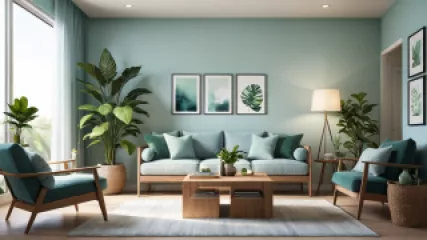Creating a Relaxing Home with Color Psychology
Introduction
When it comes to creating a relaxing home, color psychology plays a crucial role. The colors we choose for our interior spaces can significantly impact our mood and overall well-being. By understanding the psychology of color, you can intentionally design your home to promote relaxation and mental health. In this step-by-step tutorial, we will explore how to use color psychology to create a calming and soothing atmosphere in your living space.
Step 1: Choose a Calming Color Palette
The first step in creating a relaxing home is to select a calming color palette. Soft and muted colors are known to have a soothing effect on the mind and body. Some popular options include shades of blue, green, and lavender. These colors are often associated with tranquility and can help create a peaceful environment.
Consider using a monochromatic color scheme, which involves choosing different shades of the same color. This creates a harmonious and unified look in your space. Alternatively, you can opt for an analogous color scheme, which involves selecting colors that are adjacent to each other on the color wheel. This creates a sense of cohesion and balance in your interior design.
Step 2: Incorporate Soft Textures
In addition to choosing calming colors, it's essential to incorporate soft textures into your home. Soft textures, such as plush rugs, cozy blankets, and comfortable cushions, contribute to the overall sense of relaxation. They create a tactile experience that promotes comfort and coziness.
When selecting fabrics and materials, opt for natural and organic options whenever possible. Fabrics like cotton, linen, and silk not only feel soft to the touch but also add an element of luxury to your space. By incorporating these textures into your interior design, you can enhance the calming atmosphere of your home.
Step 3: Consider Natural Elements
Natural elements have a calming effect on our minds and bodies. Bringing nature indoors can help create a soothing environment that promotes relaxation. Consider incorporating elements such as indoor plants, natural light, and wooden furniture into your home.
Indoor plants not only add a touch of greenery to your space but also improve air quality and provide a sense of tranquility. Choose low-maintenance plants like peace lilies or snake plants that thrive in indoor environments. Additionally, maximize natural light by keeping windows unobstructed and using sheer curtains that allow sunlight to filter in.
Wooden furniture adds warmth and a connection to nature in your home. Opt for furniture pieces made of natural wood or incorporate wooden accents such as coffee tables or shelving units. These natural elements will further enhance the relaxing atmosphere you are creating.
Step 4: Use Soft Lighting
Lighting plays a crucial role in setting the mood in your home. Soft, warm lighting is ideal for creating a relaxing atmosphere. Avoid harsh, bright lights that can be overwhelming and instead opt for gentle, diffused lighting options.
Consider using table lamps with soft, warm bulbs or installing dimmer switches to control the intensity of your overhead lights. Candlelight is another excellent option for creating a cozy and serene ambiance. Choose unscented candles in calming colors to avoid overwhelming your senses.
Step 5: Personalize with Accents
While creating a relaxing home, it's essential to infuse your space with personal touches. Display items that bring you joy and evoke positive emotions. This could be artwork, photographs, or sentimental objects that hold special meaning to you.
When selecting accent pieces, choose colors that align with the calming color palette you have established. Soft pastels, neutral tones, and earthy colors work well in creating a serene atmosphere. By personalizing your space with meaningful accents, you can create a tranquil environment that reflects your personality.
Conclusion
By understanding the psychology of color and incorporating it into your interior design, you can create a relaxing home that promotes mental well-being. From choosing a calming color palette to incorporating soft textures and natural elements, every step plays a role in creating a soothing atmosphere. Remember to personalize your space with meaningful accents and create a sanctuary that truly represents you. With these step-by-step tips, you can transform your home into a haven of relaxation and tranquility.






